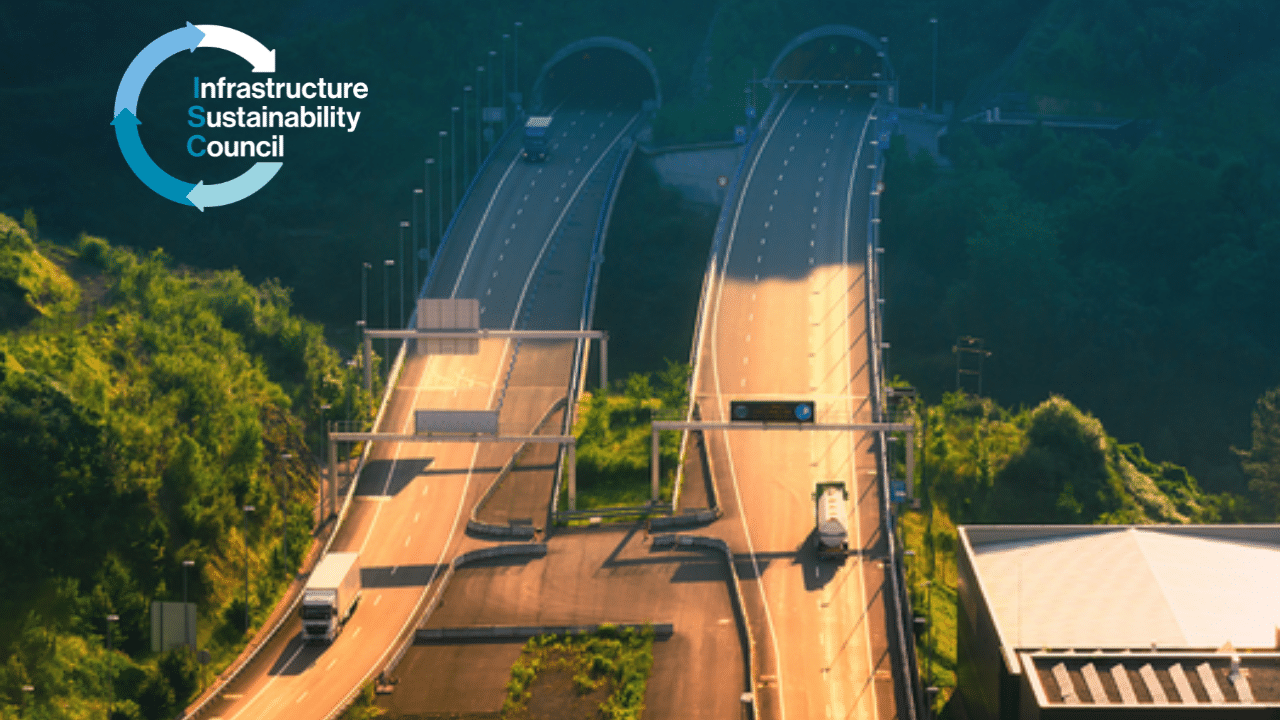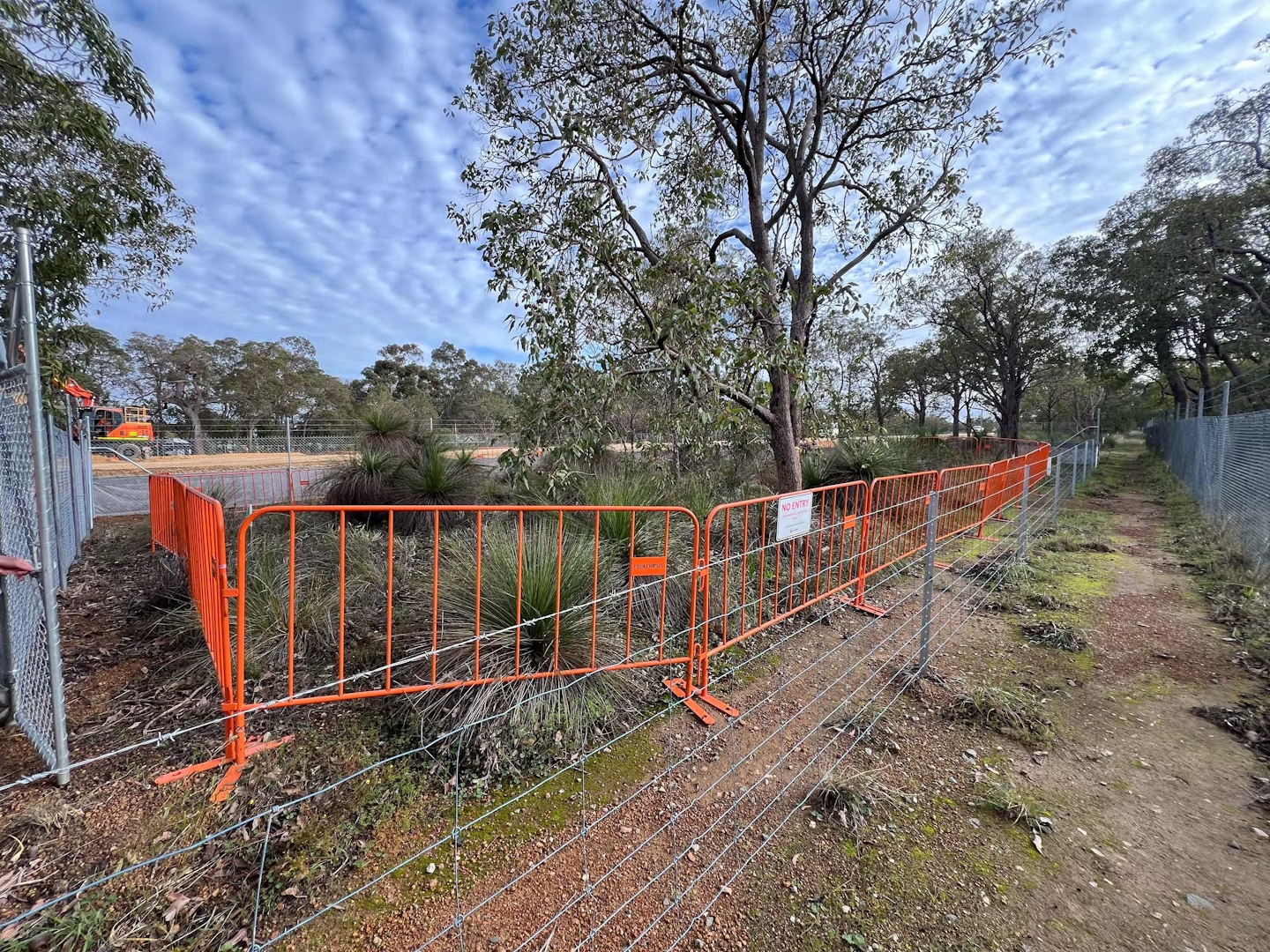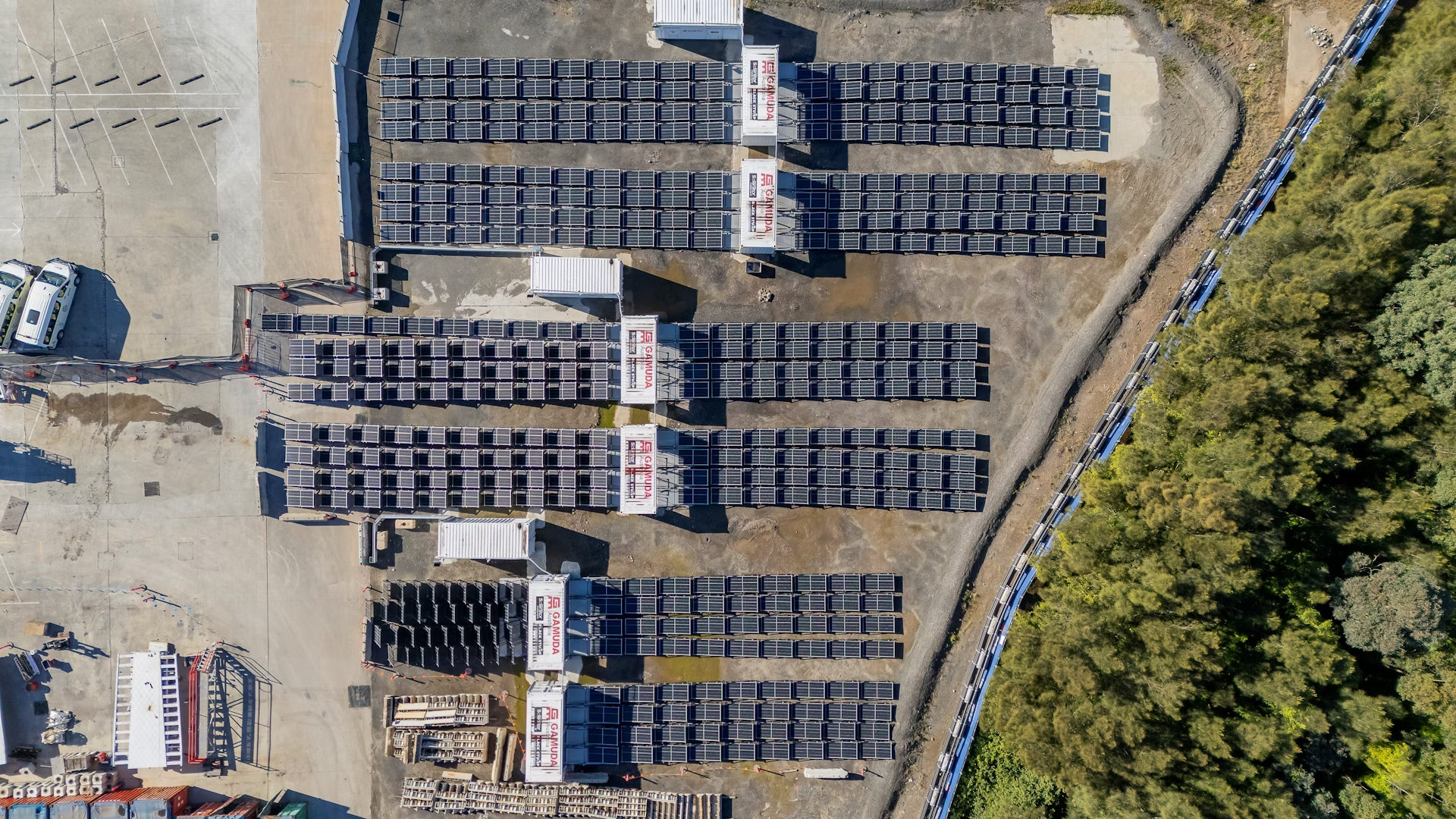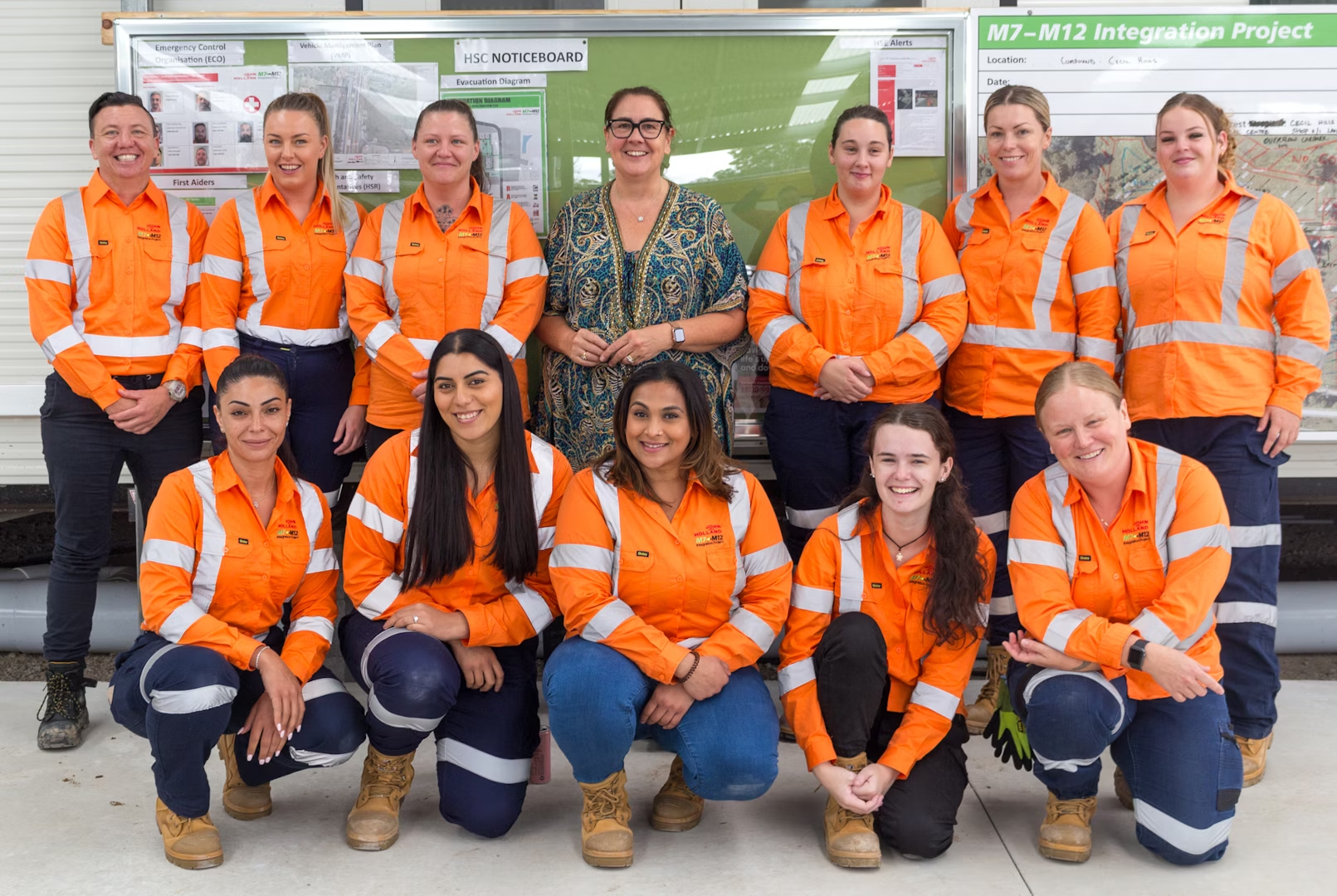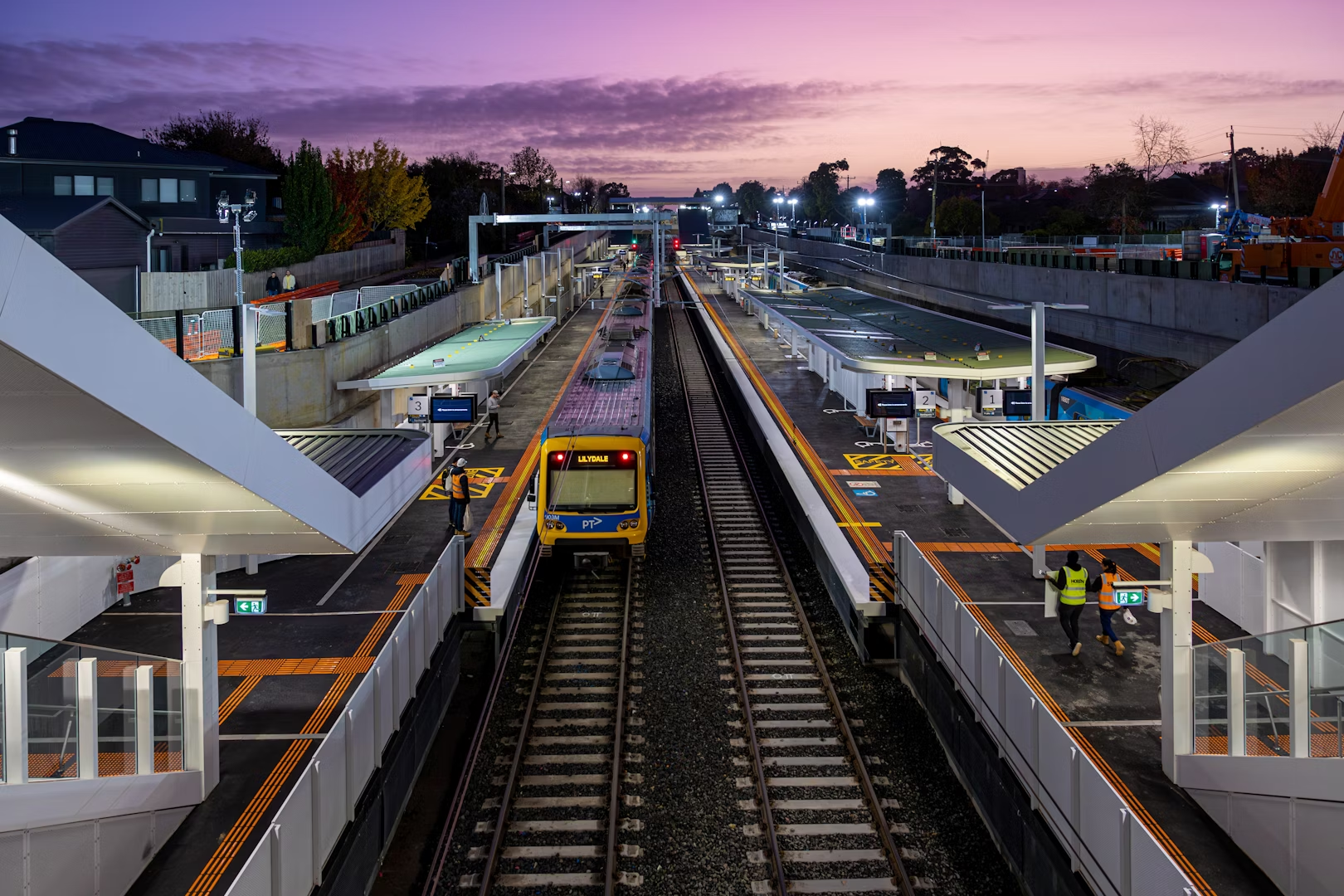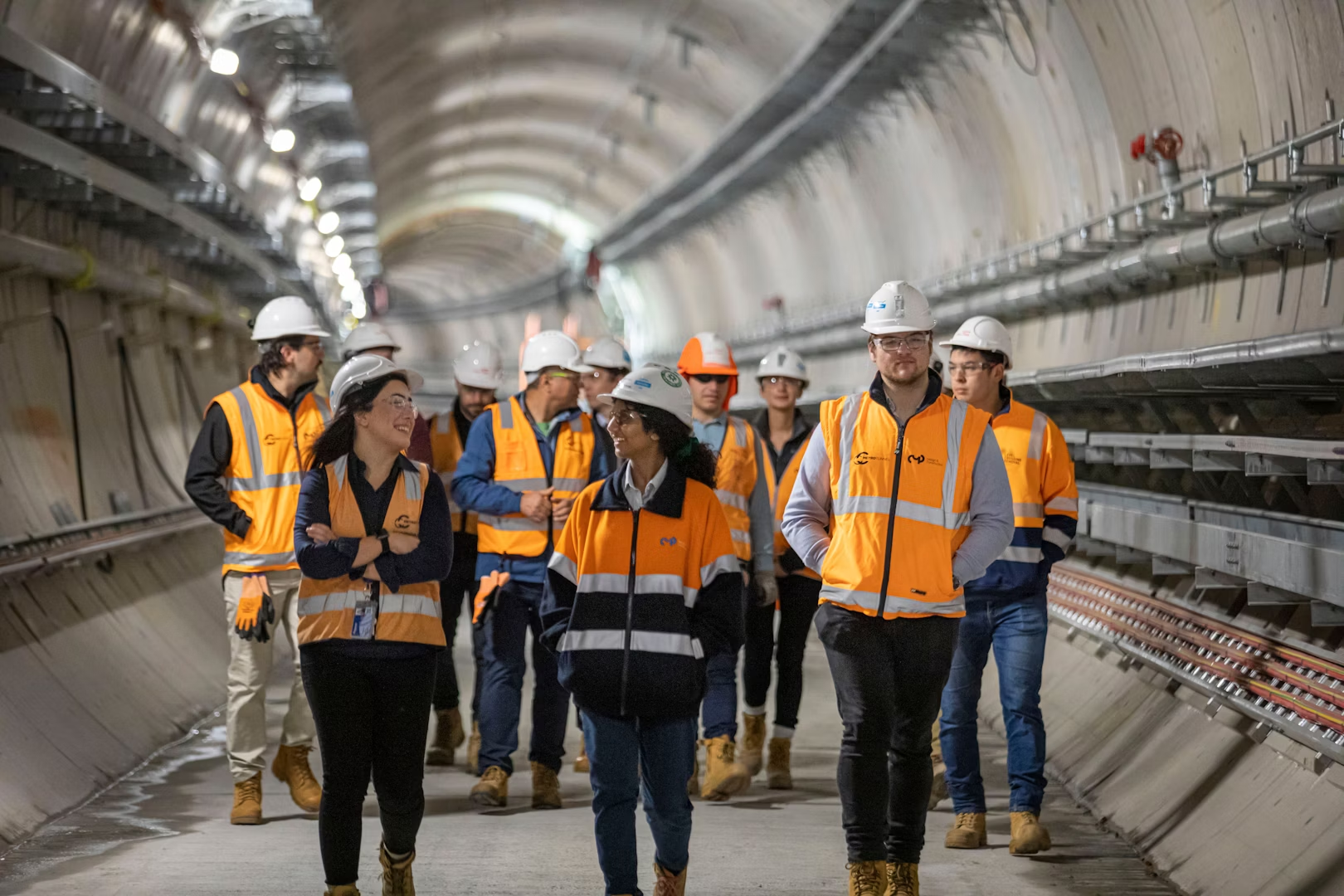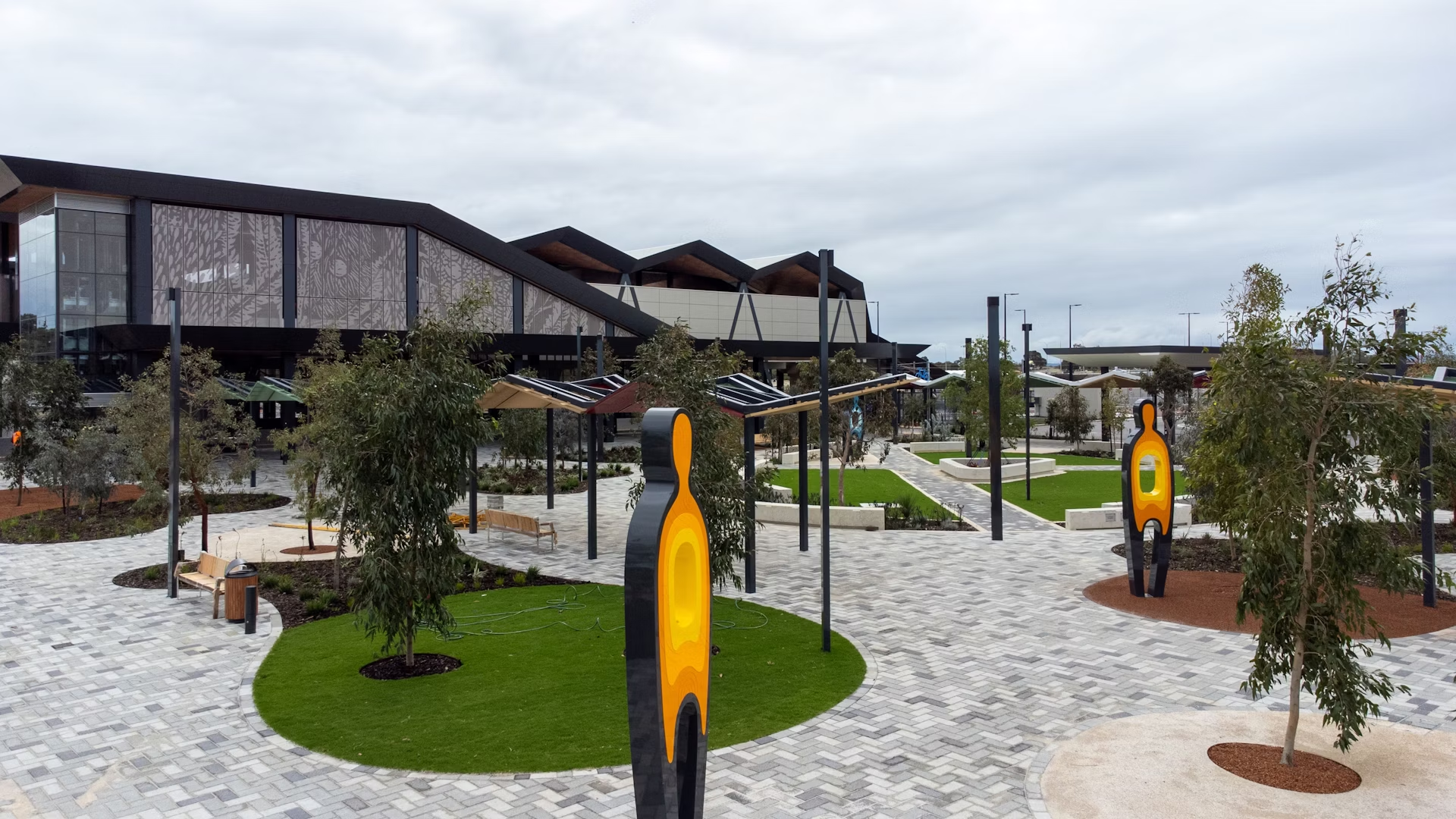The Metropolitan Roads Program Alliance (MRPA), including Fulton Hogan, Level Crossing Removal Project, and Metro Trains Melbourne, has achieved notable sustainability successes through a strong governance framework, collaborative efforts, and innovation.
MRPA’s approach emphasized sustainability from the start, focusing on collaboration, system development, and continuous improvement.
Key initiatives implemented on the Fitzgerald and Robinsons Road Level Crossing Removal Projects included the development of a paperless data capturing system and sustainability dashboard, Design Artefact Checklists and energy, materials, and water models. The Minimum Material Standard (MMS) and Minimum Biodiesel Standard (MBS) were also developed and mandated across the program of works.
Their dedication has not only led to significant successes but also fostered a vibrant team environment where collective efforts have driven meaningful sustainability results and a wider adoption of sustainable practices across the industry, which will undoubtedly leave a lasting legacy and contribute to multiple UN Sustainable Development Goals (SDGs).
Describe WHAT you have done and HOW you have done it. Please provide a summary of your initiative, innovation, or approach.
The Metropolitan Roads Program Alliance (MRPA) comprises of Fulton Hogan, Level Crossing Removal Project, and Metro Trains Melbourne.
Key to MRPA’s enduring sustainability success has been its effective governance framework which has ensured sustainability is embedded across all projects from the onset, with a clear focus on partnerships and collaboration, innovation, system development, and continuous improvement.
WHAT WE DID:
By continuously improving and streamlining this framework, MRPA has been able to innovate and improve its systems and processes and share these learnings with the industry.
This submission highlights how this approach has driven significant innovations and sustainability improvements, which were implemented on the Fitzgerald and Robinsons Road Level Crossing Removal projects.
The most significant results of MRPA’s governance strategy and framework include; increasing the quality and visibility of sustainability performance and monitoring data, developing and implementing ‘Design Artefact Checklists’, Minimum Material Standards (MMS), Minimum Biodiesel Standards (MBS), trialling and adopting innovative sustainable construction methodologies and materials.
HOW WE DID IT:
PERFORMANCE MONITORING AND REPORTING –
Accurately tracking as-built materials, energy, water, and waste data is a challenging part of the sustainability rating process.
Working with MRPA’s Continuous Improvement team, suppliers, subcontractors, other Alliances, and External IT consultants, the Sustainability team developed a paperless data Sustainability data capturing program for as-built materials, energy, water and waste.
The team researched options and metrics for each type of input to ensure reporting accuracy, a monthly external reporting form was developed on SharePoint which utilised construction pre-start meeting attendance to automatically send reports out to relevant subcontractors, triggering them to report material, energy, water and waste.
The paperless data capturing program has enabled data collection to be more efficient, ensuring any refinements to systems and processes are supported by robust and accurate data.
CONTINUOUS IMPROVEMENT APPROACH –
Lessons from previous Level Crossing Removal Projects (LXRP) were captured and assessed to ensure there was ongoing evaluation and adaption of governance practices to improve sustainability outcomes and performance. This approach identified several key areas for improvement, including:
- Opportunity for improved data visibility
- Opportunity to better integrate sustainability during the planning and development phase of future projects
- Opportunity to mandate above industry standards and targets within the alliance
- Opportunity to trial innovative construction methodologies and materials.
Moreover, an annual Sustainability Survey has been undertaken within MRPA over the last 3 years to review performance, strategies, and implement new actions.
COLLABORATION –
Feedback and lessons learnt from previous projects were shared and discussed with key stakeholders including design partners, asset owners, suppliers, and subcontractors.
This ensured that a collaborative and robust approach was taken to continuously improving and enhancing systems and processes in a way that benefited all parties involved.
By incorporating lessons learnt and unpacking these with key stakeholders, MRPA were able to enhance and develop their systems and processes, and successfully implement them on the Fitzgerald and Robinsons Road Level Crossing Removal Projects.
What were the OUTCOMES and how were those outcomes shared?
- Developed a Sustainability Dashboard to enhance visibility of all subcontractor energy, water and waste data;
Following the effective implementation of the paperless data capturing program, MRPA developed a Sustainability Dashboard on PowerBI that pulls the data onto live streamed Dashboards.
This automated data management approach provides consistency and transparency allowing MRPA to compare live data to sustainability targets.
This has ensured project teams and management are informed and aligned, and sustainability targets are on track to be met. This level of automation also offers significant time savings leading to a more effective use of labour hours and allowing the team more time to analyse the findings of the data and put them to use.
Lessons learnt, flow charts, background processes and the template of the data capture system were shared with the other alliances and other projects within Fulton Hogan to give them insight into the process and a reference point should they wish to implement a holistic paperless solution.
- Developed ‘Design Artefact Checklists’ and internal energy, materials and water models to track sustainability deliverables during the development phase of the projects;
The Sustainability team reviewed the existing management system and identified that updates and new documents were required to ensure sustainability was embedded early in the project lifecycle.
The team developed ‘Design Artefact Checklists’ to ensure social, environmental and economic initiatives were included in the design partner’s scope with timelines allocated. Procurement management systems, pre-award, and contract documents were also updated to include sustainability targets.
Early intervention during the design and planning phase and the use of the Artefact Checklist has resulted in significant fuel savings on the Fitzgerald (22.79% reduction) and Robinsons Road (3.44% reduction) projects, and a leading design rating.
Energy, materials and water models were also developed and implemented across the Fitzgerald and Robinsons Road LXRP and subsequent projects. These models were developed by way of identifying industry best practise and creating purpose-built models that captured the requirements for civil construction.
The models and Design Artefact Checklists are shared across Fulton Hogan projects throughout Australia and New Zealand, and are shared with MRPA’s design partners to increase industry sustainability resources.
- Development and implementation of the Minimum Material Standard (MMS) and Minimum Biodiesel Standard (MBS) to mandate Alliance carbon reduction initiatives;
The MRPA sustainability team developed a Minimum Material Standard (MMS) which mandated minimum recycled content for ready-mix concrete and asphalt and the Minimum Biodiesel Standard (MBS) to mandate B5 for all dry hire, select wet hire and B20 for all light towers and generators.
To develop the standards MRPA engaged suppliers and subcontractors to ensure products availability and acceptability. These were endorsed by senior management, mandating their use across all MRPA projects.
These standards make the Alliance’s carbon reduction initiatives clear and achievable for all project delivery teams. Resulting in a replacement of diesel with B20 Biodiesel of (6.55%) on the Fitzgerald and (4.44%) Robinsons Road LXRP.
The MMS and MBS are stored in the Project Collaboration System and electronically shared with the Project team. The minimum standards are also included in Alliance procurement document templates to ensure they are captured from the outset of a project.
- Trial and adoption of innovative construction methodologies and materials;
MRPA worked with project development and delivery teams to implement several innovative construction methodologies and materials. Innovations achieved between July 2023 and June 2024 included:
• Australian first design adoption and manufacture of the ‘Vista’ RSS (Reinforced Soil Structure) wall reducing materials and construction energy;
• Victorian first acceptance and rewriting of the DTP (Department of Transport and Planning) ‘Off structure’ roadside barrier standard, allowing the use of slimline steel barriers instead of larger reinforced concrete roadside barriers, reducing materials and energy used.
• Australian first trial of a green hydrogen light tower during construction night works resulting in lessons learnt shared across the industry. This was shared and well received with the ARA’s Rail Infrastructure Contractors Executive Committee and ARA’s Sustainability Committee, and is the first infrastructure project in Australia to utilise this now patented innovation.
Lessons Learnt in the development of these systems and initiatives were shared with parent companies, design partners and the LXRP program.
Describe WHO benefited from your initiative, innovation, or approach?
MRPA’s collaborative approach to developing sustainability management systems by engaging with key stakeholders ensured extensive knowledge sharing and the best sustainability outcomes achieved for the industry. MRPA consulted with several key stakeholders including the client LXRP, consultants, industry competitors, design partners, asset owners, suppliers and subcontractors while developing these robust sustainability management systems.
By working with these external stakeholders, MRPA was able to identify current best practice, as well as any existing gaps in the industry. MRPA then worked with key stakeholders, in particular, asset owners (DTP, councils) and our design partners (SMEC, Aurecon, Arcadis) to develop and implement new management systems and ensure their governance.
In developing the Design Artefact Checklists and the energy, materials and water modelling templates, extensive consultation took place with external stakeholders to create these templates, purpose built for civil construction projects. These templates have since been shared with Alliance parent companies and design partners to promote best practice and knowledge sharing.
MRPA’s digital paperless as-built reporting system and PowerBI dashboard has also been extensively shared across the LX program, other construction sharing forums (Emerging Sustainability Infrastructure Professionals network) and with Alliance parent companies. The feedback received from external partners has been that this system is best practice across the industry and has prompted others to build and implement similar systems.
The Minimum Material Standard (MMS) for concrete and asphalt alongside the new Minimum Biodiesel Standard (BMS) have been industry leading mandates, creating true management commitment to MRPA’s carbon reduction targets. The MMS and MBS have both been shared and reused across the LXRP program and with parent companies.
MRPA’s efforts have been recognized with four consecutive ‘Leading’ IS v1.2 certifications in just three years on the Evans and Cardinia LXRP, Clyde Road LXRP, South Gippsland Highway LXRP and finally in 2023 on the Fitzgerald and Robinsons Road LXRP – demonstrating clear efforts to implement initiatives and innovations with a far reaching audience.
What LEGACY and UN SDG CONTRIBUTION was achieved?
MRPA’s development of a robust sustainability management system and continuous improvement of this system has left a significant industry legacy and contributed to several Sustainability Development Goals (SDGs) in the process.
SDG 8. Decent work and economic growth:
When LXRP engaged MRPA with Fulton Hogan as the principal contractor, they set ambitious sustainability targets and associated KPIs for their aggressive program of level crossing removal projects. Not only did MRPA meet these sustainability targets, but they developed a system that enabled the team to exceed these targets.
Over a period of five years, MRPA’s engagement with external consultants and other stakeholders drove further economic growth, providing work during the development of their sustainability management systems.
SDG 9. Industry, Innovation and Infrastructure:
MRPA’s innovations including the ‘Vista’ RSS wall, off-structure steel roadside barrier, and hydrogen powered light tower trial have been widely shared with industry partners. The RSS wall and steel roadside barriers resulted in Victorian road asset owner DTP changing their standards, allowing these innovations to be used across all new projects.
SDG 12. Responsible consumption and production:
Management systems including the updated procurement system, Design Artefact Checklists, digital paperless data collection and the Minimum Materials Standard culminated in an overall reduction of material use and subsequent reduction of 34% in greenhouse gas emissions for the Fitzgerald and Robinsons Road LXRP in 2023.
SDG 13. Climate action:
In addition to the 34% reduction in GHG emissions, the Fitzgerald Road and Robinsons Road LXRP also realised a 44% overall reduction in GHG emissions for the project’s energy footprint. These energy reductions were realised by several initiatives including design efficiencies and the extensive use of biodiesel in generators.
SDG 17. Partnership for the goals:
MRPA’s engagement and partnership with stakeholders including design partners, asset owners, suppliers, and subcontractors when developing systems and implementing sustainability initiatives has led to the successful achievement of MRPA’s carbon reduction targets and goals.
Legacy:
MRPA’s management system and governance framework has been extensively shared amongst alliance partners, design partners, asset owners, suppliers and subcontractors and other industry competitors. This knowledge sharing has left a significant legacy with several stakeholders utilising and employing these systems on their own projects.
Governance Legacy:
From the outset, an Environmental and Sustainability Manager was appointed to MRPA’s Alliance Management Team, ensuring sustainability was represented in all key strategic decisions. Since then, the sustainability team has been enabled with the tools and resources to continually strive for transformational change. Additionally, MRPA created an Operational Improvement Manager role to identify areas of improvement and continuously update Alliance management systems.
Community Legacy:
• The Fitzgerald Road project successfully integrated indigenous design into their RSS wall panels. This co-design occurred after extensive consultation with the local Registered Aboriginal Party;
• MRPA strives to give resources back to the community, wherever possible. On the Fitzgerald and Robinsons Road projects, this included donating large amounts of mulch and felled timber logs to the local Friends of Kororoit Creek group;
• MRPA have organised ‘Clean up Australia’ events over four consecutive years within local community groups. The Fitzgerald Road project team worked with the Friends of Koroit Creek group to clean up the creek local to the project;
MRPA has achieved outstanding sustainability outcomes by emphasizing collaboration, innovation, and continuous learning. This dedication has not only led to significant successes but also fostered a vibrant team environment where collective efforts and shared objectives drive meaningful sustainability results. The exceptional team culture cultivated through these values will undoubtedly leave a lasting legacy.



